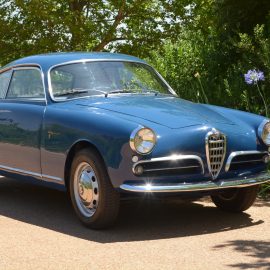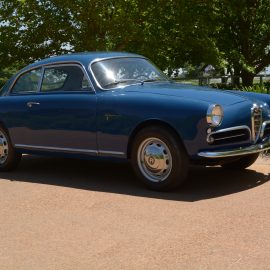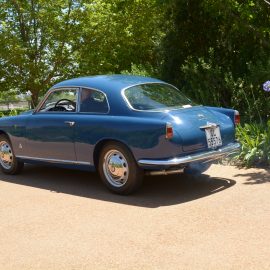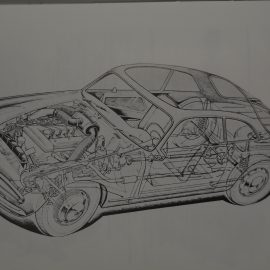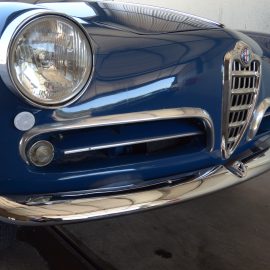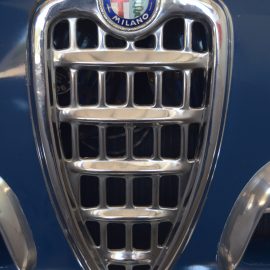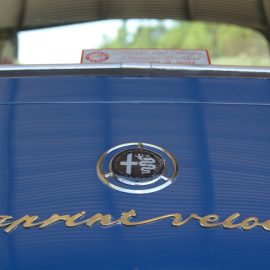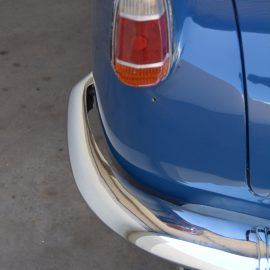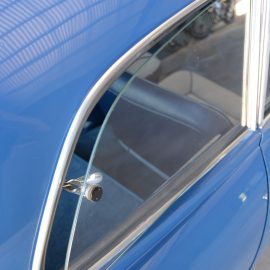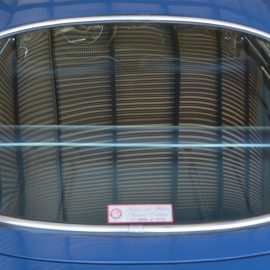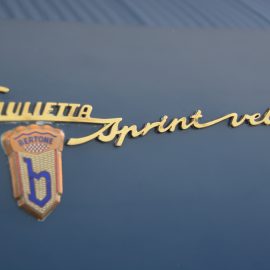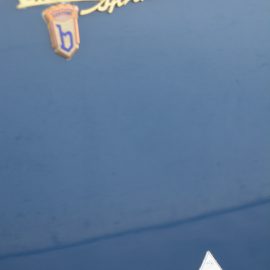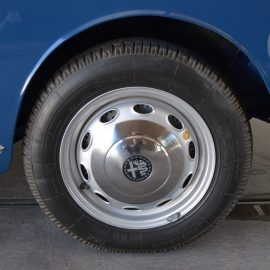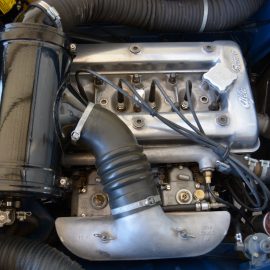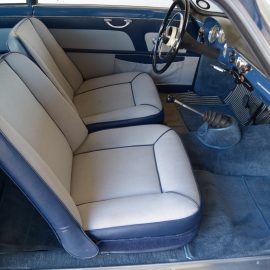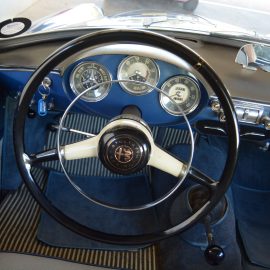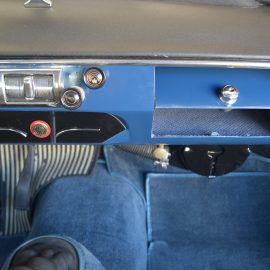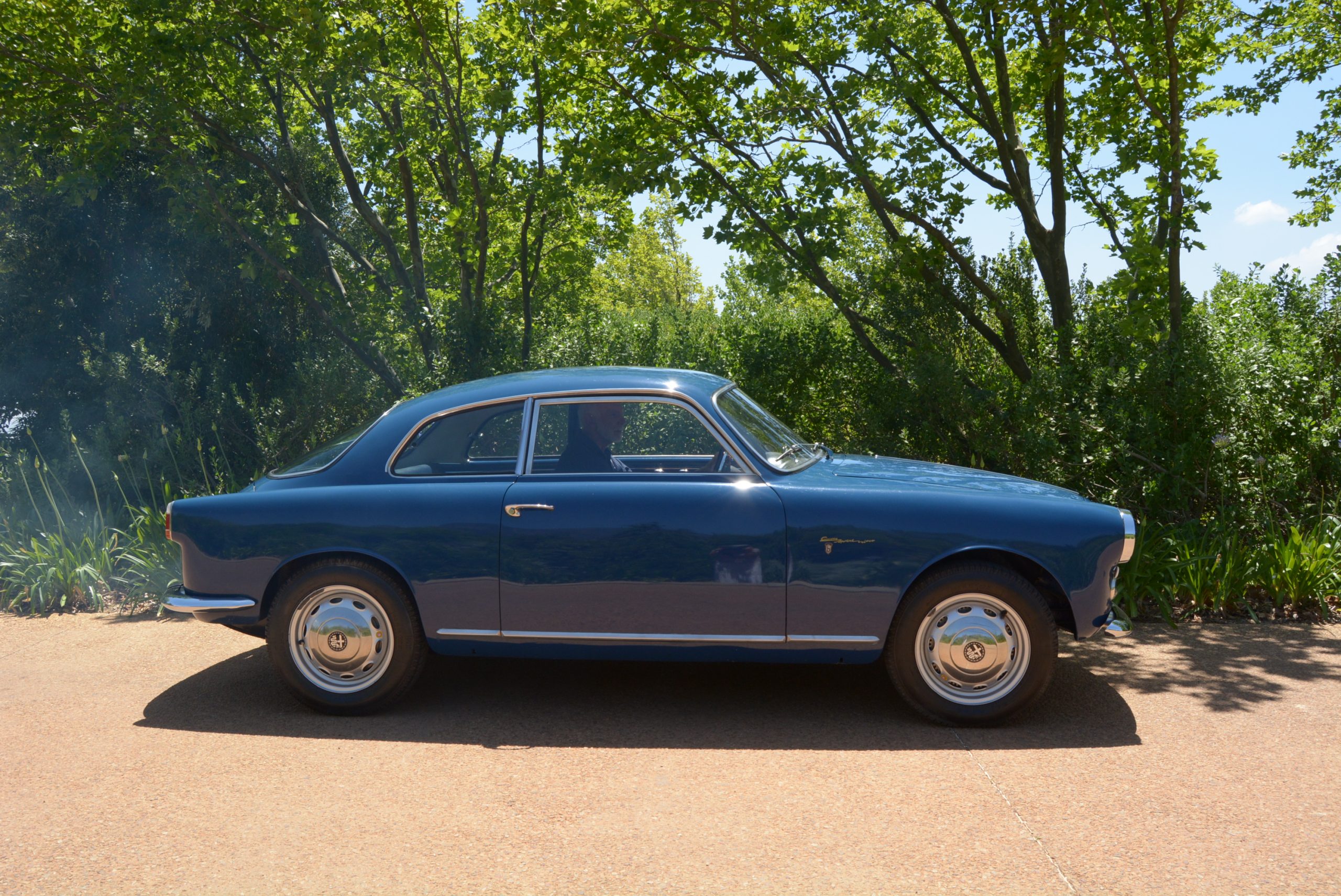
06 Aug Giulietta – A Little Jewel
The 110-year history of Alfa Romeo is riddled with ups and downs, yet somehow it manages to survive and maintain a charisma that marketers of rival makes could only look on with a touch of envy. There were a number of factors that led to the charm; some superb designs from a number of Italy’s most talented stylists combined with success in international competition helped establish an aura of style and sporting spirit – ‘cuore sportivo’. But for the most part the company’s products were targeted at a more well-to-do clientele, but this changed in the aftermath of WWII.
With the conflict over and the world settled back into peacetime living and financial stability, there was an increase in population and a call for affordable private transportation. To meet the demand, most manufacturers looked to producing smaller, cheaper vehicles. Alfa Romeo was no exception, and under the guidance of Orazio Satta Puliga, the Giulietta concept was conceived, aimed at putting the company’s established technological know-how into a smaller package. Commonly referred to as just ‘Satta’, he joined Alfa’s design department in 1938 and in 1946 became head of design, overseeing the development of 158, 159, 1900, Giulietta, Giulia, Montreal and Alfetta models. His talents also included re-organising the production system along modern lines, as he believed that cars had to offer ‘good performance, reliability and low cost’. He was particularly good at space efficient designs.
The Giulietta was a turning point for Alfa Romeo – it was the company’s first car aimed at the mass market, and the first to have a name rather than a cipher or a number. For technical reasons and a desire to maintain Alfa’s sporting tradition, the first Giulietta model (code 750E) was a compact two-door 2+2 Sprint coupé. From Satta’s base design, Bertone’s chief designer and engineer Franco Scaglione – who was responsible for the Alfa Romeo Disco Volante and BAT aerodynamic concepts – finalised the shape.
But not only was the Giulietta a downsized car, its new engine, designed by Giuseppe Busso, was also a small capacity design – but full of engineering excellence. It featured an aluminium alloy engine block with cast iron ‘wet’ cylinder liners, a forged steel crankshaft running in five main bearings, a finned oil sump, an aluminium alloy cylinder head with hemispherical combustion chambers and centrally-located spark plugs, and direct valve actuation via bucket tappets riding on double overhead camshafts driven by a double-row timing chain. It was the forerunner of what was to become Alfa’s staple engine for the next four decades. In initial guise it had a swept volume of 1 290 cc and with a single twin-choke downdraught carburettor and an 8,5:1 compression ratio, it developed 59 kW at 6 300 r/min. Top speed was 165 km/h.
Front suspension was made up of control arms with coaxial coil springs and hydraulic dampers. The solid rear axle was located by a longitudinal link on each side, and a wishbone-shaped arm linking the top of the aluminium differential housing to the floorpan. Springing was by coils springs and hydraulic dampers. All Giuliettas, except for the last SZs, had large-diameter hydraulic finned aluminium drum brakes on all four corners. Wheels were 15-inch.
Rumour has it that Bertone – who were entrusted to build the car – only finished the prototype 20 days before it was launched at the 1954 Turin Motor Show, where it was an instant success. Around 2,000 orders were collected, a huge number for that time. The elegant design, sporty performance, comfortable ride and excellent handling – all at an affordable price – soon had showrooms filled with eager-to-buy customers. At the 1955 Turin Motor Show it was joined by the 4-door saloon – Berlina – and later in the year by the open two-seat Spider, featuring convertible bodywork by Pininfarina. A limited-edition, aerodynamic two-door, two-seat Sprint Speciale – SS – coupé designed by Scaglione appeared in 1957 along with a more powerful Giulietta TI – Turismo Internazionale – Berlina. Carrozzeria Colli made a few station wagon variants called Giulietta Promiscua while Carrozzeria Boneschi did the same thing, its version called Weekendina.
In 1956 a lightweight Sprint Veloce – ‘fast’ – appeared with dual twin-choke sidedraught carburettors and a 9,1:1cr that helped realise 66 kW at 6 500 r/min and raised top speed to 185 km/h. In 1957 the Sprint Zagato arrived with a 9,7:1cr offering 74 kW at 6 500 r/min and a top speed of 193 km/h.
The Sprint Veloce was discontinued in 1957, probably in deference to the faster Sprint Zagato and SS models, although there is reason to suspect that the cost of producing a special lightweight body in addition to the ‘Normale’ body was not worth the outlay. So, the Confortevole (Comfortable) was introduced in late 1957 with the Veloce’s 66 kW engine in the Normale body. Other identifying features include aluminium window frames and wind-up windows, and underneath a Veloce-spec rubber buffer fitted to prevent the sump from hitting the frame rail. All Confortevoles had the same mechanical spec as the Veloce. The Franschhoek Motor Museum’s left-hand drive car featured here carries Alfa’s body number 750E AR1493E 06127 and left the line on 20 Feb 1958. Only 50 of these cars were produced, identified on the Bertone body number plate with an *A* suffix, in this case 655515*A*.
Entering the Sprint is easy, but there is always a fear that for tall, long-legged drivers such as myself that the fabled Italian long arm driving position would hamper driving comfort. The seat’s backrest angle is fixed but there is plenty of fore/aft adjustment and the steering wheel angle is fine, so no problem. The pedals are noticeably offset towards the centre of the car, but their skew location is not problematic.
The motor fires up with a characteristic crackle that was a trademark of Busso’s design in all of its different capacities and states of tune. At launch the Giuliettas were fitted with an all-synchromesh four-speed aluminium gearbox with a column shift, which was replaced by a floor shift in 1957. The five-speed ’box only appeared in 1962 towards the end of the Giulietta’s 11-year life span, but at some time in its life, this car has inherited a five-speed, an acceptable – and it appears, only – conversion from standard.
The facia is simply laid out with a trio of comprehensive instruments set into a single pod behind the two-spoke two-tone steering wheel (with horn ring). Centre stage goes to the rev-counter with in-built oil pressure gauge. To the left the fuel, water and oil temperature gauges are grouped together, while on the left is the speedometer reading to 140 km/h.
On the road, the Giulietta’s famed driveability is soon apparent, making for a thoroughly enjoyable experience. It is strictly a two-seater; in place of the standard Sprint’s +2 rear seats is a split flat shelf, the two halves of which can be lifted off to reveal some storage space to supplement the already good-sized boot.
In 1959 there was a minor facelift and the model series code changed to 101, but the combined 750E/101 Series Giulietta was the Little Jewel in Alfa Romeo’s post-war history. The first of the breed, the Sprint, set the standard on what was to become a golden era for the otherwise often troubled Italian automaker. Its timeless design and superb road manners make it a classic of note and driving the Confortevole adds just a little bit of exclusivity to the experience.




